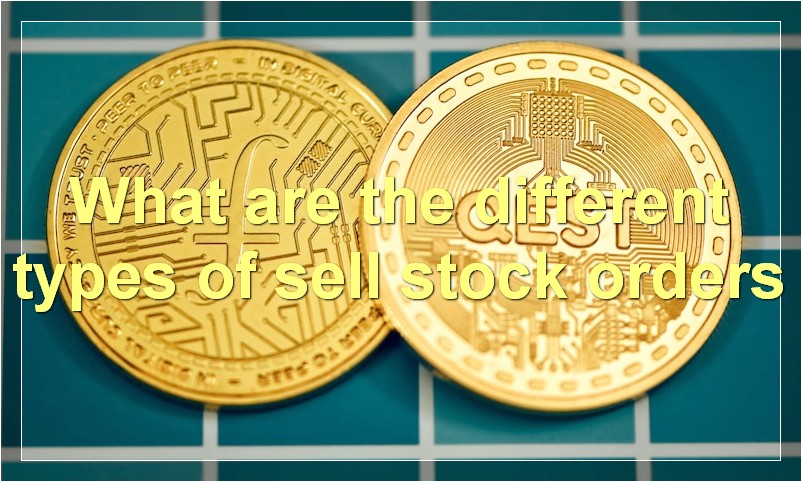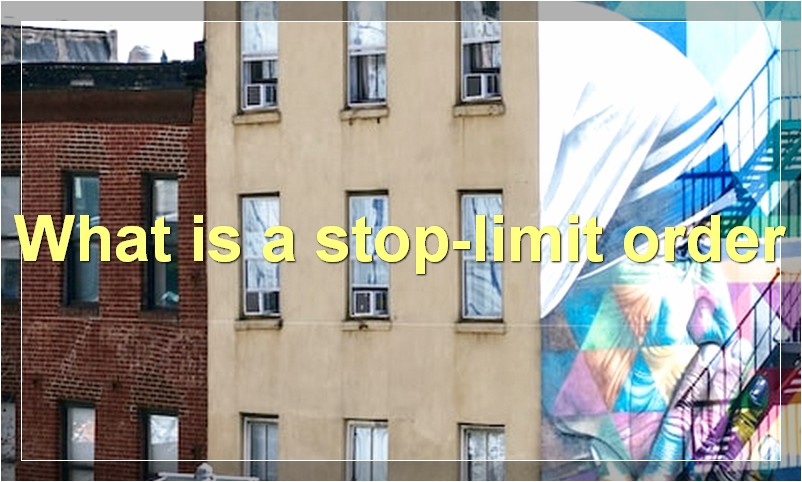Are you looking to get started in the stock market, but don’t know where to begin? This beginner’s guide will teach you everything you need to know about selling stock, from the basics of what a stock is to more advanced concepts like short selling. By the time you’re finished reading, you’ll be equipped with the knowledge you need to start making money in the stock market.
What is a sell stock order
When you place a sell stock order, you’re instructing your broker to sell shares of a particular stock that you own at the best available price. Sell orders are used when an investor wants to unload shares of a stock.
There are different types of sell orders, including market orders and limit orders. Market orders are executed immediately at the current market price. Limit orders allow you to set the minimum or maximum price at which you’re willing to sell your shares.
Sell orders can also be placed as day orders or good-till-canceled (GTC) orders. Day orders expire at the end of the trading day if they’re not executed. GTC orders remain open until they’re canceled by the investor or executed.
It’s important to remember that you may not always get the price you want for your shares when you place a sell order. That’s because the price of a stock is constantly changing, and there’s no guarantee that it will be at the price you want when your order is executed.
What are the different types of sell stock orders

There are a few different types of orders when it comes to selling stock. A market order is the most basic and simply tells your broker to sell your shares at the current market price. A limit order lets you set a minimum or maximum price you’re willing to sell at, and your broker will only execute the order if the stock reaches that price. A stop order is similar to a limit order in that you set a price, but with a stop order, your shares are sold once the stock hits that price, no matter what the current market price is. This can be used as a way to cut your losses if a stock starts to drop in value.
What is a market order
A market order is an order to buy or sell a security at the current market price. Market orders are the most basic type of order and are executed immediately at the prevailing market price. When you place a market order, you are instructing your broker to buy or sell the security at the best available price in the current market.
Market orders are used when you want to ensure that your trade will be executed quickly and at the best possible price. They are ideal for when you have a strong opinion about where the market is headed and you want to get in or out quickly.
However, because market orders are executed at the prevailing market price, you may end up paying more or less than you had anticipated. In a fast-moving market, the price of a security can change rapidly and you may end up paying significantly more or less than you had hoped.
If you are not comfortable with the risks associated with market orders, you can use limit orders instead. With a limit order, you specify the maximum price you are willing to pay (or the minimum price you are willing to accept) for the security and your trade will only be executed at that price.
What is a limit order
A limit order is an order to buy or sell a security at a specific price or better. A buy limit order can only be executed at the limit price or lower, and a sell limit order can only be executed at the limit price or higher.
What is a stop order
A stop order is an order to buy or sell a security at a specified price, which is typically above or below the current market price. A stop order is triggered when the security’s price reaches the stop price, and becomes a market order.
Stop orders are commonly used to limit losses or protect profits on a security position. For example, if you own shares of XYZ Corporation that you bought at $50 per share, you might place a stop order at $45 per share. If the share price falls to $45, your stop order will be triggered and your shares will be sold at the market price, which may be lower than $45. This will limit your loss on the position to $5 per share.
Stop orders can also be used to enter a security position. For example, if you believe XYZ Corporation’s shares are undervalued at their current price of $50, you could place a stop order at $55 per share. If the shares rise to $55, your stop order will be triggered and you will buy the shares at the market price, which may be higher than $55. This will provide you with a potential profit if the shares continue to rise.
What is a stop-limit order

When you place a stop-limit order, you are instructing your broker to buy or sell a security at a specified price, or better. This type of order is used to limit losses or lock in profits.
A stop-limit order is an order to buy or sell a security at a specified price or better. Once the stop price is reached, the order becomes a limit order to buy or sell at the limit price. The advantage of a stop-limit order is that it guarantees a trade at a specific price.
For example, suppose you own 100 shares of XYZ stock, which is currently trading at $50 per share. You place a stop-limit order with a stop price of $45 and a limit price of $49. If the stock falls to $45, your order will be executed at $49. However, if the stock continues to fall and is trading at $44 when your order is triggered, your order will not be executed because the limit price has not been reached.
How do I place a sell stock order
Assuming you would like tips on how to place a stock sell order:
There are a few things to keep in mind before placing a sell order for stocks. The first is to make sure the stock is actually worth selling. This can be done by research or consulting with a financial advisor. Secondly, decide what type of sell order it will be. There are four types of sell orders: market order, limit order, stop order, and stop-limit order. Each has its own set of pros and cons. For example, a market order is the simplest type of sell order and will execute immediately at the current market price. However, this also means that you may not get the best possible price for your stock.
Once you have decided which type of sell order to use, you can then place the order with your broker. They will then execute the order according to your specifications. It is important to remember that you may not always get the exact price you wanted for your stock, but as long as you are comfortable with the price you receive, then selling your stock was a successful transaction.
How do I choose the type of sell stock order
There are a few different types of sell stock orders, and each has its own advantages and disadvantages. Here are a few things to consider when choosing which type of sell stock order to use:
-Market orders: A market order is the simplest type of sell stock order, and will usually get your shares sold quickly at the current market price. However, you may not get the best possible price for your shares this way, as the market price can fluctuate rapidly.
-Limit orders: A limit order allows you to set a specific price that you want to sell your shares at. This gives you more control over the price you get for your shares, but there is no guarantee that your shares will actually sell at that price. If the market price never reaches your specified limit price, then your shares will not sell.
-Stop orders: A stop order is similar to a limit order, but it becomes a market order once the share price reaches a certain point (the “stop” price). This can be used as a way to limit your losses on a stock that is dropping in value, as once the stop price is reached, your shares will be sold immediately at the current market price.
What are the risks of selling stock
When you sell stock, you are essentially giving up partial ownership of a company in exchange for cash. This means that you are no longer entitled to any future dividends or profits that the company may generate. Additionally, if the company experiences financial difficulties, your investment may decrease in value.
What are the benefits of selling stock
There are many reasons to sell stock. One benefit is that it can help raise capital for a company. By selling stock, a company can bring in money to invest in new products, expand its operations, or pay off debts. This infusion of cash can help a company grow and become more profitable.
Another benefit of selling stock is that it can provide liquidity for shareholders. If shareholders need cash, they can sell some of their shares. This provides them with the money they need while still allowing them to retain ownership in the company.
Finally, selling stock can help a company attract new investors. When a company sells stock, it is issuing new shares. This can help to broaden its shareholder base and attract new investment.

